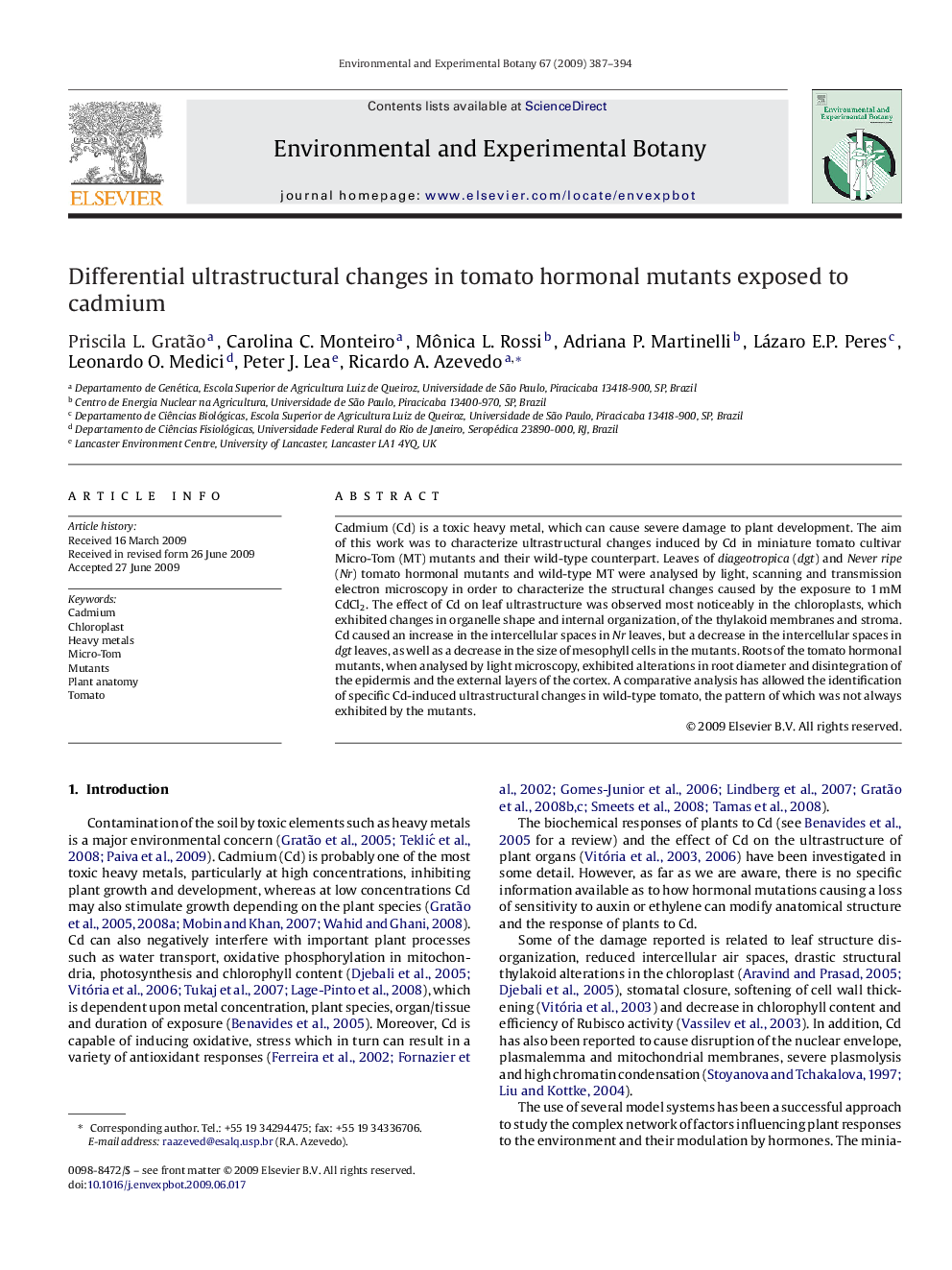| Article ID | Journal | Published Year | Pages | File Type |
|---|---|---|---|---|
| 4554974 | Environmental and Experimental Botany | 2009 | 8 Pages |
Cadmium (Cd) is a toxic heavy metal, which can cause severe damage to plant development. The aim of this work was to characterize ultrastructural changes induced by Cd in miniature tomato cultivar Micro-Tom (MT) mutants and their wild-type counterpart. Leaves of diageotropica (dgt) and Never ripe (Nr) tomato hormonal mutants and wild-type MT were analysed by light, scanning and transmission electron microscopy in order to characterize the structural changes caused by the exposure to 1 mM CdCl2. The effect of Cd on leaf ultrastructure was observed most noticeably in the chloroplasts, which exhibited changes in organelle shape and internal organization, of the thylakoid membranes and stroma. Cd caused an increase in the intercellular spaces in Nr leaves, but a decrease in the intercellular spaces in dgt leaves, as well as a decrease in the size of mesophyll cells in the mutants. Roots of the tomato hormonal mutants, when analysed by light microscopy, exhibited alterations in root diameter and disintegration of the epidermis and the external layers of the cortex. A comparative analysis has allowed the identification of specific Cd-induced ultrastructural changes in wild-type tomato, the pattern of which was not always exhibited by the mutants.
